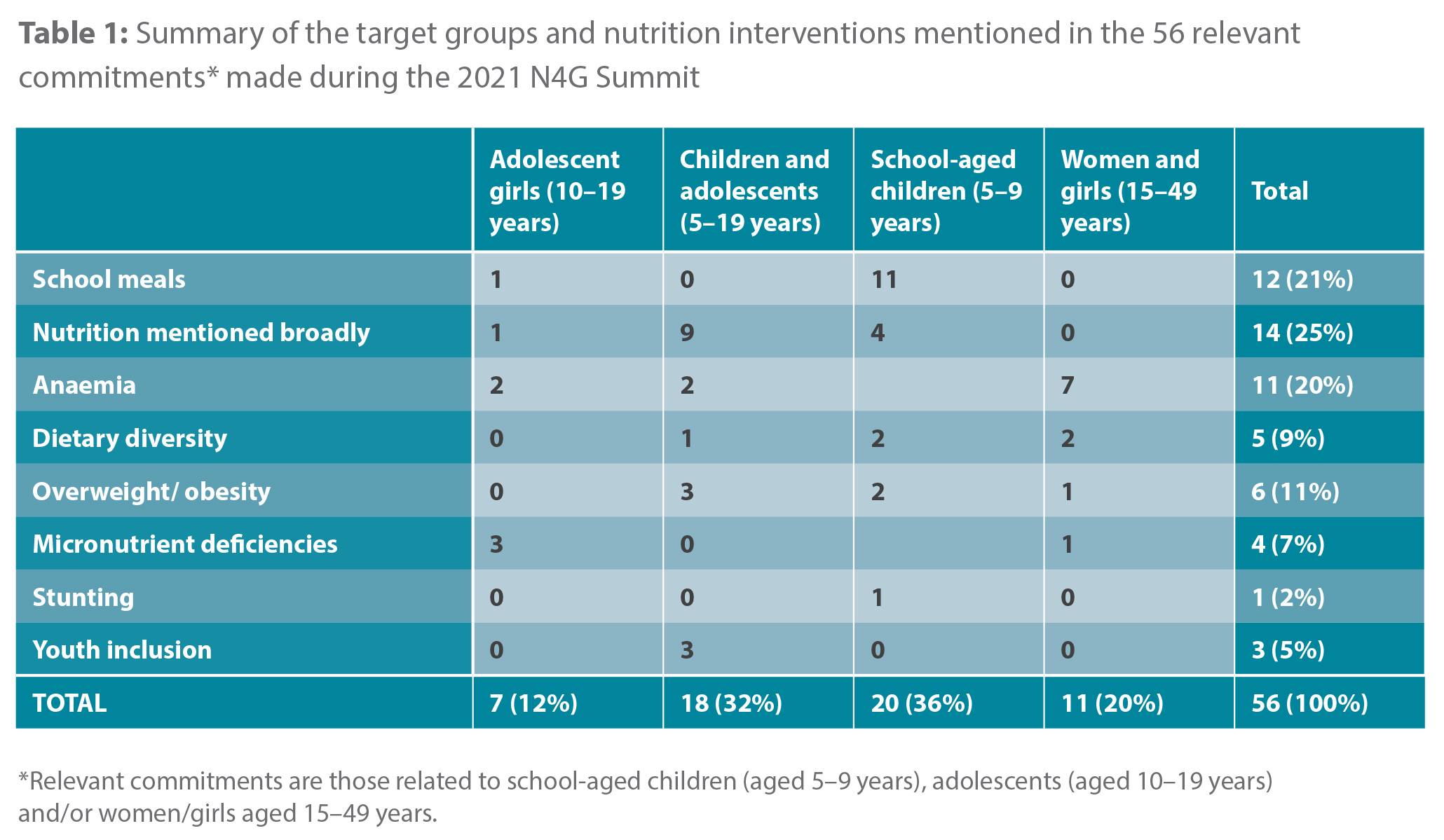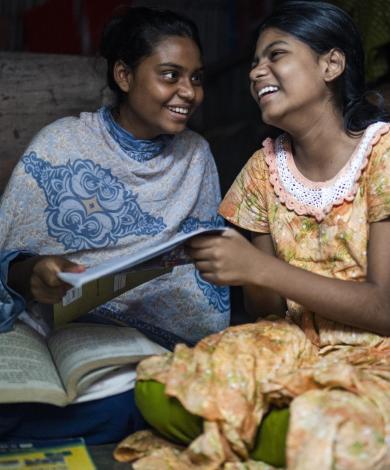Young Lives longitudinal data has allowed researchers around the world to examine how exposure to poor health and nutrition in early childhood impacts outcomes in later life. Getting the right start in life is critical as communities increasingly grapple with global crises; for example, childhood exposure to climate shocks has an unequal impact on children’s nutrition, with those from the poorest backgrounds hit hardest. Yet, in 2023, the lack of standardised nutrition surveillance systems for children over five and adolescents continue to limit our understanding of their nutrition challenges and how to address them. It also explains why very few nutrition targets exist and perpetuates the deprioritisation of routine data collection for these age groups.
This might surprise colleagues and partners working in the wider humanitarian and development sector. Don’t the Sustainable Development Goal (SDG) targets cover this? While nutrition plays a role across all 17 SDGs, it is specifically addressed in SDG 2. Targets for this goal include addressing the nutritional needs of adolescent girls, pregnant and lactating women and older persons by 2025. Older adolescent girls are represented in the indicator for anaemia prevalence in women and girls aged 15–49 years, yet no adolescent-specific indicators are set. Anaemia is a critical nutrition challenge faced by adolescent girls, but it is by no means the only one.
What about the World Health Organization? Well, there is a WHO guideline to support implementation of effective actions to improve adolescent nutrition, but many of the recommendations lack specific targets for adolescents. The exceptions include recommendations for sugar and salt reduction, which apply targets across child and adult populations or suggest adjusting adult targets to child-equivalent levels.
Even the 56 new nutrition commitments relating to school-aged children, adolescents and/or women and girls aged 15–49 years made at the influential 2021 Nutrition for Growth (N4G) Summit fell short – many lacking specificity or not being measurable.


To promote, support and monitor progress, we believe that ambitious but realistic and evidence-based targets for children and adolescents 5-19 years are needed.
So, what should be prioritised?
In our latest report on priority nutrition targets and indicators released this week and coinciding with International Adolescent Health Week, Emergency Nutrition Network (ENN) investigates the current international targets related to child and adolescent nutrition and highlights priority indicators for these age groups.
To understand which indicators should be prioritised in national data systems, we reached out to a wide community of nutrition partners and collaborators including members of the Global Adolescent Nutrition Network to partake in a survey that scored indicators collected from sources including the World Bank, the Healthy Behaviours in Schools survey, Demographic and Health Surveys, the WHO Health-Promoting Schools initiative, the UNICEF Adolescent Health Portal and the ”œintake” global diet quality score.
The survey results confirmed the importance of many pre-existing indicators. Those ranked of greatest public health importance for children and adolescents 5-19 years, and which should be included in national data collection systems, are: the prevalence of anaemia, prevalence of thinness; prevalence of high salt consumption; the percentage of girls with low age at first pregnancy; low reported quality of life and percentage affected by anxiety and depression; the percentage receiving iron and folic acid (IFA) supplements; and finally the proportion of schools providing school meals and delivering weekly iron and folic acid supplementation (WIFAS) to adolescent girls.

The top scoring indicators of nutritional status, health and wellbeing, and intervention coverage, based on public health importance, practicality, and current availability, are presented in Tables 3–5 of our report.
Being realistic
To ensure that the exercise didn’t provide only a wish-list, but rather a practical set of key indicators for nutrition surveillance systems, we also asked survey respondents to rank indicators of nutrition, health and wellbeing, and intervention coverage by the practicality of collecting the raw data. Biochemical indicators, such as those assessing micronutrient status, were deemed too expensive and impractical to implement in many settings. Even in small-scale research studies, obtaining blood is challenging, and in many countries, it can be difficult to find a lab where blood can be reliably and accurately tested. Incorporating such assessments into national surveys and surveillance systems is not likely to be feasible.
Hopeful Days Ahead
Based on the pre-existing targets (some of which were mentioned at the beginning of this blog) and the priority indicators from our survey, our report outlines a range of recommendations for global and national nutrition targets for children and adolescents 5-19 years.
The good news is that survey respondents felt many of the recommended intervention coverage indicators are practical and currently available. The nutrition community, both global and national, should work more closely with the education and health sectors to better utilise existing data on school nutrition programmes and adolescent pregnancies.
Likewise extending the use of the mid-upper arm circumference (MUAC) approach to assess thinness in children over five years and adolescents should be explored.
It should of course be highlighted that concerted efforts and new initiatives across the global community are underway to address the lack or indicators targets, including the WHO GAMA , the UNICEF Adolescent Data Portal, and the Research Consortium for School Health and Nutrition which houses a community of practice on ”œnutrition measurement”.
Going forward, better collaboration between existing initiatives will be critical, as will a greater focus on nutrition by all these initiatives.
The influential 2021 Lancet series on Adolescent Nutrition recommended actions to ”œstrengthen and extend national data collection systems to include standardised indicators and determinants of adolescent nutritional status, and coverage of interventions among both adolescent boys and girls”. We hope these findings will help to support better collaboration towards setting new and more comprehensive nutrition targets and indicators for children and adolescents.
Please do consider joining the Global Adolescent Nutrition Network (GANN), a network of over 100 researchers, academics, programmers, government representatives, NGOs and UN agencies, including Young Lives, working together on policy and practice, through research translation and coordinated advocacy for and with young people (sign up page here).
This originally appeared on the Young Lives blog on 22 March 2023.
Natasha Lelijveld and Stephanie V. Wrottesley (2023). Priority targets and indicators of nutritional status and intervention coverage for children and adolescents (aged 5–19 years).
